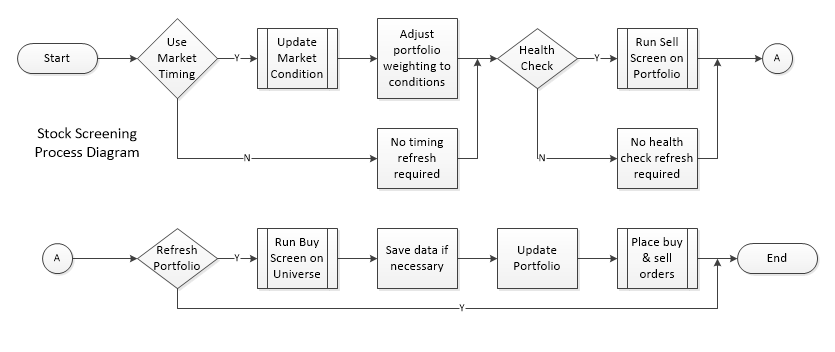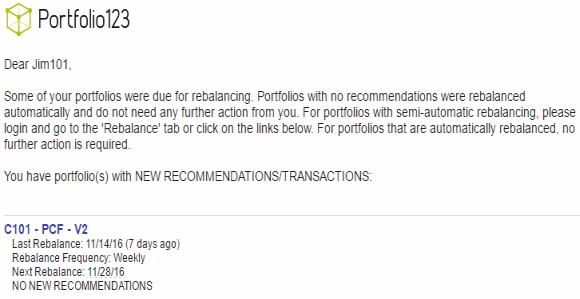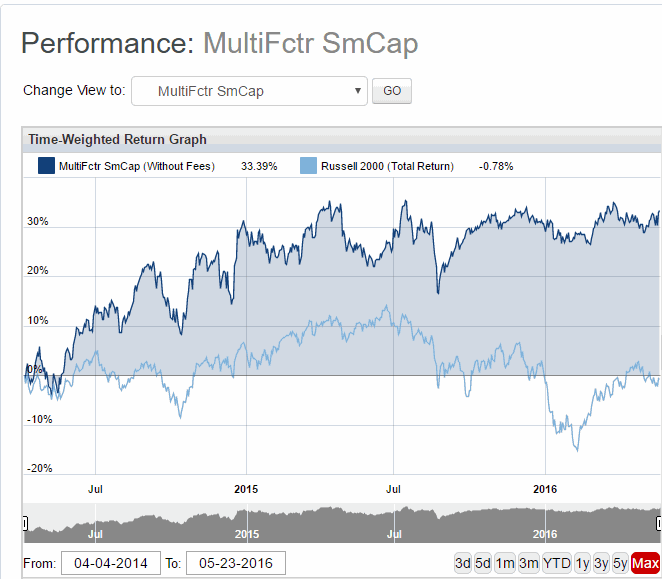Investing and Stock Screening Processes
You may have access to the finest stock screening tools, outstanding strategies and professional quality data, but if you fail to approach investing as a process, you are exposing yourself to unnecessary risk.
So approach the process like a problem to be solved.
Steps:
- Define WHAT needs to be done
- Define HOW you will do it
- DO it
- REVIEW and improve it.
No magic. Just planning.
4 Process Building Steps
1 - WHAT you are going to do: Investing Strategy
The strategy determines WHAT you plan to do. For a consistent, repeatable approach you must have a clearly defined plan (written) that identifies:
- Universe - the pool of stocks where you will be looking for the stocks that meet your criteria.
- Portfolio - the number of stocks you expect to hold and how to build the initial portfolio.
- Selection criteria - the buy criteria stocks must pass to be considered.
- Ranking system - how to identify the best stocks from those that pass the selection criteria. This is important if more stocks than you need pass the buy criteria. See here for more info.
- Holding period - how often you will re-build and/or re-balance the portfolio using the selection criteria and ranking system.
- Performance expectations - what is the baseline performance you expect. If it is not higher than the universe on a risk adjusted basis (alpha), you should just find an ETF for the universe. No point in planning to lose money. Set a point in time (e.g., six months or a year) for the performance review.
- Market Timing/Hedging (optional) - how you will manage the portfolio during adverse market conditions. The choices are ignore, go to cash, or hedge.
- Health Check interval (optional) - how often you will check the portfolio for evaluating held positions or for market conditions. Criteria related to closing a position must be identified. Notice that this will also affect the minimum holding period.
Does that seem like a lot of effort?
It is.
But successful investing over the long term requires some effort. Make a standard document for yourself and fill in the blanks to make the plan for your strategy.
There are 2 common approaches to adding the initial stocks to your portfolio:
- Buy the desired number of stocks over time. For example, if you are going to hold 20 stocks, buy a few each month until you own 20. This will require a decision about how best to refresh and re-balance.
- Buy all the positions as soon as possible.
Strategy Plan Option 1 - Market Timing/Hedging
Market timing is optional and reflects your personal preference.
There are very strong opinions for and against market timing. My preference is to make adjustments based on market conditions. Whatever you decide, document what will trigger the event and what you will do.
If you choose to adjust your portfolio during adverse market conditions, the common options are
- Go to cash and wait out the storm
- Change the weighting of your portfolio positions by adding an inverse ETF.
Strategy Plan Option 2 - Health Check
For some reason, there is very little written about portfolio health checks on fundamental strategies. At the same time, most investing strategy books and articles suggest a 1 year holding period. This may be the reason so many people only use stock screening for buying.
A lot can go wrong with a company in a year.
The alternative is to check the well being of stocks in your portfolio against sell or failure criteria. For example, if one of the criteria for buying a stock is because they pay a dividend, stopping the dividend should be a reason to sell. Why wait a year to sell?
KISS 101: An example of WHAT to do
A very basic investing strategy, KISS 101, was created to illustrate Steps 1 and 2 in the investing and stock screening processes.
Health check sell criteria should reflect a) buy criteria gone bad, or b) market timing criteria. Or both.
If you are going to hold a position for the target holding period regardless of the condition of the market or the stock, a health check is not necessary. No need to bother evaluating something if you are not going to make changes.
2 - HOW you will do it: Stock Screening Tools
Stock screening tools working on company and market data are HOW you turn your plan into a process.
The data requirements of your strategy may limit the available tools. If yes, see if alternative data are available within the tool of choice. Or consider other tools.
The core feature of stock screening is the strategy specific screen.
Investing Strategy Screen
The universe and filtering criteria are the key components of the screen.
Common to most strategies are liquidity requirements - thinly traded stocks often have a significant difference between the sell price and the buy price. This spread means you will probably pay a premium to buy the stock and be forced to sell at a discount. Think in terms of how much you are investing in a stock as a percent of the daily dollar amount traded. Most screeners can handle this; if not in terms of daily dollar volume then at least in terms of shares traded.
Another common approach is to select only stocks from a specific exchange or published index. For example, eliminate stocks on the OTC exchange. Or only select stocks from the Russell 1000 index. Once again, most tools can handle exchanges and some published indexes.
The data offered by the tools varies as do the operators and the ability to get industry relative or sector relative comparisons.
The bottom line is that the tool must have the criteria and be able to implement the rules you have set forth.
Once built, run the screen to get the passing companies. This is where it starts to get interesting.
Some scenarios:
- You need to identify 3 stocks to buy and 3 stocks pass the screen. No problem.
- You need to identify 3 stocks to buy and only 1 or 2 stocks pass the screen. No problem. At the next refresh period, you run the screen again. Or you take what ever alternate action you specified in your plan. Or you discover you need to revise your plan to address this scenario.
- You need to identify 3 stocks and 5 stocks pass the screen. The solution is the ranking system in your plan.
Ranking System
Some stock screening tools allow criteria weighting and ranking to be created within the screen in order to limit or rank the number of passing companies on multiple factors (Portfolio123, Research Wizard, StockRover). If not in the tool, the relevant factors can be downloaded to a spreadsheet and ranked.
Ranking the passing companies on a single criteria is accomplished by sorting the list of passing companies on that criteria. Again, if it cannot be done in the tool, download the data to a spreadsheet and sort on the single factor.
Optional processes
If you are going to examine the portfolio for stocks to sell, it is simply a matter of creating a separate screen with sell criteria. Notice that the screen must be run against your portfolio, not the original universe. If you plan to have Health Checks, the screener must allow you to screen a list of stocks, or you will need to create a work-around.
Notice also that if you identify stocks in your portfolio to sell, you need to run the buy screen to select replacements. If that is your plan.
Build your market timing system from scratch or identify an available source. For most fundamental screeners, market timing is outside the scope of the product.
The flow diagram is a little messy since it incorporates the optional processes.
 Stock Screening Process Flowchart
Stock Screening Process FlowchartThe process is exercised any time one of the 3 events (market timing, health check or refresh) occurs.
The optional events would force a portfolio refresh if a change occurred (market condition changes or a position in the portfolio is closed).
KISS 101: Examples of HOW to set it up
The different stock screening tools (StockRover, Portfolio123, MorningStar) are used as examples of HOW to implement the strategy.
And how to adapt to the features and limitations of the tools.
3 - DO it: Manage Portfolio
Automate. Automate. Automate.
Failing to act because of missing a refresh date is both sloppy process as well as frustrating. Wish I could say it doesn't still happen to me. Recently I missed the annual refresh date of a MagicFormulaInvesting based strategy I was forward testing. Not only had I failed to create a calendar event, I had failed to add it to my calendar. Automate the stock screening process.
Strategies implemented as portfolios in Portfolio123 send an email on every Health Check refresh date as shown.

Other tools (MorningStar, StockRover, Zacks) send a portfolio status update on a daily, weekly or monthly basis so you can review stock performance as well as the current state of applicable criteria. Great reminders.
Okay. Lesson learned (I hope).
Online Brokers
Your stock screening process identifies the stocks to be bought and sold.
Your online broker is where you make it happen.
In most cases, you will not be able to track the performance of individual strategy portfolios. This is somewhat of a nuisance since it means you will need to download (or copy from an account statement) the performance (and dividends) of each stock in each portfolio if you want to track portfolio performance. And you want to do that for Step 4.
Another consideration is forward testing. Even though I back-test a strategy before implementing it, I like to forward test with a small amount of money. Even if the strategy has only 5 stocks, it will still require some serious money at a traditional online broker.
The alternative is to paper trade - just note what you would have paid or received and do the math. This never seems to work for me but it is a great way to forward test if you have the discipline.
Another way to forward test is to use either FolioInvesting or Motif. I use FolioInvesting and generally create a unique folio for the strategy and fund it with $100 US. This allows me to track performance as shown in the chart below.

This turned out to be an excellent strategy which I currently run at a traditional broker as well.
BTW - they don't all turn out this well. But for $100, I get a sense of the reality of the strategy.
KISS 101: Examples of managing live portfolios
This is where you walk the talk - implement the results of your stock screening in the stock market.
Four distinct folios have been set up in Folio Investing to illustrate the DO part of the process - portfolio management.
These are live portfolios with real performance.
4 - REVIEW: Expectations vs Reality
So, did it meet or exceed your expectations? You did remember to document your expectations in step 1. Yes? And you have been tracking the results. Yes?
In any case, you may want to examine the out-performance against your expectations. As part of the planning, you should already have a date set for the initial performance review.
The stock screening tools and online broker used will impact how much data is available for review. In some screeners (Stock Investor Pro and Portfolio123), it is possible to go back in time to see what the company data looked like. In other words, you could run the buy screen against the original. In others, you will need to save a copy of data in a spreadsheet for each screen date.
If you are saving data, save some criteria you think may have an effect on future performance but did not include in the screen. And save data for more than just the companies you selected.
Sample Screens
Check the following examples of screening criteria and implementations for a further understanding of how to implement your strategies. Sample screens are provided for several stock screening tools.
Strategy Screens:
- Dogs of the Dow: Large cap value and quality strategy with an emphasis on yield. A variation was used above to illustrate the investing process.
- Income Investing: Value and financial strength criteria with an emphasis on dividend growth and stability.
- Tiny Titans: Small cap value and momentum strategy.
HOME | Site Policies | Contact Us | About Me | About Site | Site Map
Popular Pages
CANSLIM Strategy
Folio Investing
Economic Indicators
Portfolio123
Ranking Systems
New
We value your suggestions, comments, and questions.
Our goal is to make this site as useful as possible.
Contact Us
Thanks!
Stock screening tools and consistent, sustainable investing processes.
About Me
Why build a website instead of a blog?
About this site
January 2018